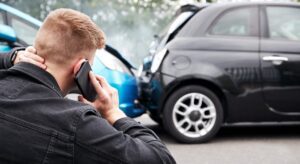Diaphragm Breathing

What is the Diaphragm?
The diaphragm is a large, thin, dome-shaped muscle that divides the thoracic (chest) cavity from the abdominal (belly) cavity. As the diaphragm contracts and moves down, the lungs are able to expand and fill with air.
Breathing with your diaphragm along with breathing through your nose, is essential for a healthy respiratory process.[1] When you have inefficient breathing, either through disease or poor posture/habits, air can become trapped in the lungs, pushing down on the diaphragm. The neck and chest muscles must then assume an increased share of the work of breathing. This can leave the diaphragm weakened and flattened, causing it to work less efficiently.[2]
Five Advantages of Using the Diaphragm
- Efficient gas exchange: The bottom third of the lungs is where about two thirds of the gas exchange take place, so oxygenation is more efficient when you use the diaphragm.
- Less tension and tightness in the neck and shoulders as the muscles here can relax
- Diaphragmatic breathing re-balances the automatic nervous system, reducing heart rate, breathing rate and changing from sympathetic fight to parasympathetic calm and relax.
- Diaphragmatic breathing gently “massages” or moves the abdominal organs, aiding digestion and helping lymphatic drainage; much of the lymphatic system is located just below the diaphragm.
- The diaphragm contributes to good posture and core muscle strength, so needs to work properly. In fact overdeveloped abs and sucking the stomach in can hinder proper movement of the diaphragm, and promote upper chest breathing.
How to Breathe Using the Diaphragm?
- Lay flat on your back with your knees bent and head supported. Place the hands around the lower ribs – this will help you to feel when the diaphragm is moving. You may also place a hand on your chest and the other on your belly to feel the movement.
- Breathe in through the nose so that the lower ribs and stomach expand. You should feel the abdominal press up and the ribs expand out the side; the ribs will also subtlety press out through the back.
- Exhale through pursed lips and feel the abdominal tighten up and the ribs contract back in.
When first learning how to use the diaphragm, it is easier to learn while laying flat on the ground – when that becomes easier, try it seated in a chair. In the beginning it will take effort to make the diaphragm move correctly and it is common to become tired and a little light-headed because of the extra work and increased intake of oxygen.
Be patient and keep practicing. It is something that needs to be worked on several times a day consistently before it becomes a natural habit.
CONTACT US TO LEARN ABOUT OUR VARIETY OF NATURAL THERAPIES TO IMPROVE YOUR HEALTH
Here is a video link and image to assist in learning your new breathing pattern:






